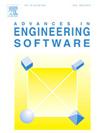Robustness of hybrid light gradient boosting for concrete creep compliance prediction
IF 4
2区 工程技术
Q2 COMPUTER SCIENCE, INTERDISCIPLINARY APPLICATIONS
引用次数: 0
Abstract
Concrete creep is one of the most crucial factors in concrete. A reliable prediction of concrete creep is vital for safe concrete structure design and maintenance. However, the theoretical and empirical models are convoluted and unreliable due to the complex time-dependent behavior of concrete creep. This study collects a comprehensive experimental database from the literature to develop a hybrid machine learning model that combines grey wolf optimizer (GWO) and light gradient boosting (LGB), namely GWO-LGB, for predicting precisely concrete creep compliance (Jcreep). Three widely used empirical models and six baseline ensemble machine learning models are adopted to evaluate the efficacy of the developed hybrid GWO-LGB mode. The comparative results reveal that the hybrid GWO-LGB model produces more accuracy in predicting the Jcreep than other models. In addition, the Shapley Additive exPlanations (SHAP) method is used to investigate the influence of input parameters on the Jcreep. Finally, a web tool is created to apply the hybrid GWO-LGB model readily to predict the Jcreep with new input data without cumbersome programming.
求助全文
约1分钟内获得全文
求助全文
来源期刊

Advances in Engineering Software
工程技术-计算机:跨学科应用
CiteScore
7.70
自引率
4.20%
发文量
169
审稿时长
37 days
期刊介绍:
The objective of this journal is to communicate recent and projected advances in computer-based engineering techniques. The fields covered include mechanical, aerospace, civil and environmental engineering, with an emphasis on research and development leading to practical problem-solving.
The scope of the journal includes:
• Innovative computational strategies and numerical algorithms for large-scale engineering problems
• Analysis and simulation techniques and systems
• Model and mesh generation
• Control of the accuracy, stability and efficiency of computational process
• Exploitation of new computing environments (eg distributed hetergeneous and collaborative computing)
• Advanced visualization techniques, virtual environments and prototyping
• Applications of AI, knowledge-based systems, computational intelligence, including fuzzy logic, neural networks and evolutionary computations
• Application of object-oriented technology to engineering problems
• Intelligent human computer interfaces
• Design automation, multidisciplinary design and optimization
• CAD, CAE and integrated process and product development systems
• Quality and reliability.
 求助内容:
求助内容: 应助结果提醒方式:
应助结果提醒方式:


